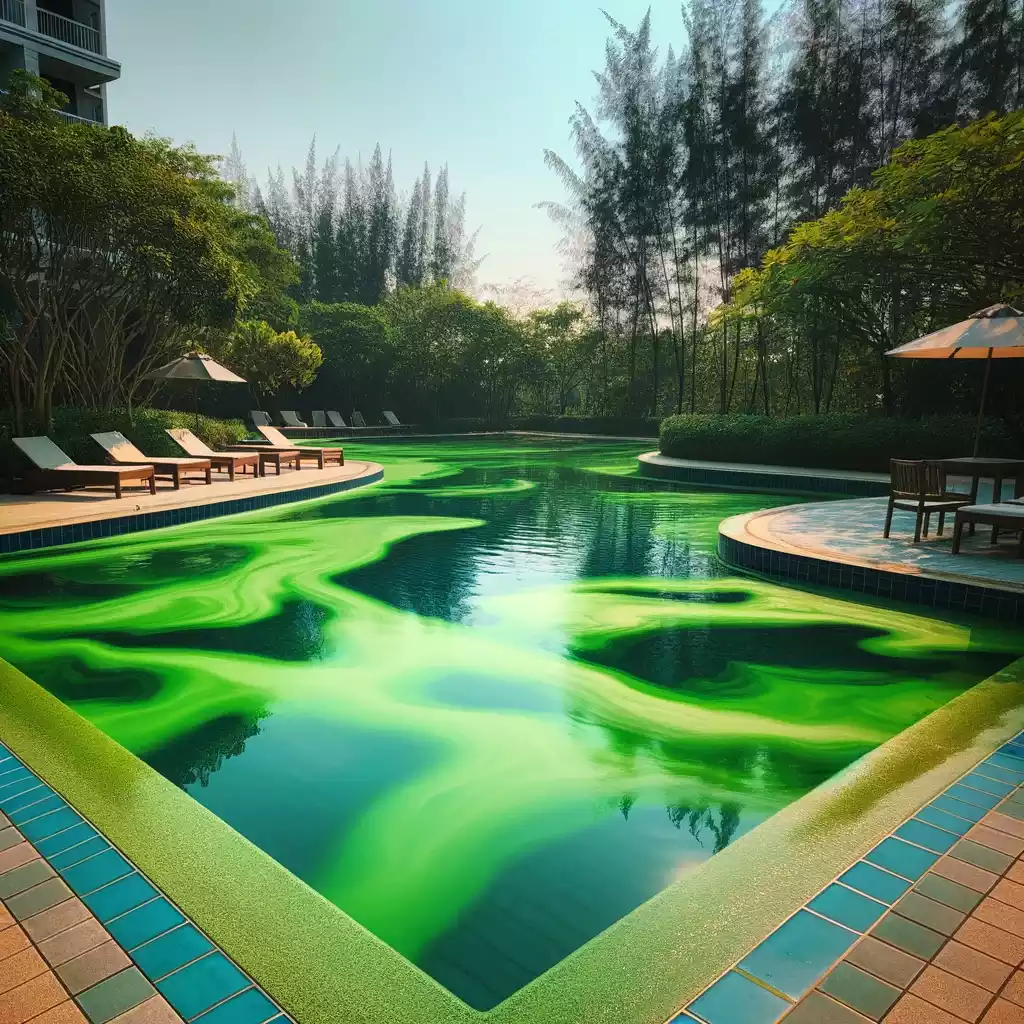As time progresses, the occurrence of algae issues in swimming pools has become a common challenge affecting water quality. The proliferation of algae not only impacts the transparency of the water but may also pose a potential threat to the health of swimmers. Therefore, finding solutions to address algae problems in swimming pools is crucial. This article will delve into the solutions for swimming pool algae issues, focusing on the selection of cleaners and the techniques for their use, aiding pool managers and users in effectively maintaining water quality.
Analysis of Swimming Pool Algae Issues
Impact of Algae on Water Quality
Algae is a common issue in swimming pools, causing various impacts on water quality, including:
- Water Turbidity: Algae reproduction can lead to turbidity, affecting the transparency of the pool water and diminishing the swimming experience.
- Slippery Surfaces: Algae growth can make surfaces slippery, increasing the risk of slips and posing a threat to pool safety.
- Unpleasant Odor: Algae growth may cause water to develop an unpleasant odor, negatively affecting the sensory experience of swimmers.
- Increased Nutrient Levels: The presence of algae is often associated with enriched nutrient conditions, potentially reducing dissolved oxygen in the water and negatively affecting ecological balance.
Characteristics of Common Algae Issues
Different types of algae problems exhibit distinct characteristics in swimming pools:
- Green Algae: Predominantly green, widespread on the pool’s water surface and walls, causing a greenish tint to the water.
- Yellow-Brown Algae: Often found on the pool floor, walls, and in the water, characterized by a yellow-brown color, reducing water transparency.
- Black Algae: Common in crevices, corners, and other dark, damp areas, giving these regions a dark and unclean appearance.

Types of Algae Cleaners
Introduction to Different Types of Cleaners
- Liquid Algae Cleaners:
- Liquid algae cleaners are a common solution to algae problems. Typically in liquid form, they are easily and quickly added to the pool water.
- These cleaners contain highly concentrated algae inhibitors that effectively suppress algae growth.
- Liquid form facilitates easy mixing, making them widely applicable to various types of pools.
- Caution should be exercised to follow dosage requirements, avoiding excessive use, and regular water quality checks are essential to ensure safety.
- Solid Algae Cleaners:
- Solid algae cleaners come in granular or block forms.
- Their advantage lies in slow dissolution, providing a longer-lasting effect.
- They release active ingredients that persist in the water, offering prolonged algae prevention.
- Suitable for pools requiring regular maintenance to keep water consistently clear.
- Bromine-Based Algae Cleaners:
- Bromine-based cleaners are relatively gentle yet effective.
- Compared to chlorine-based cleaners, they have less irritation on water quality and swimmers.
- Suitable for environments where a reduction in chlorine odor or sensitivity to allergens is desired.
- Apart from inhibiting algae growth, they can effectively kill bacteria, offering comprehensive water quality protection.
Techniques for Using Algae Cleaners
- Optimal Application Time:
- Proper timing of cleaner application is crucial for maximizing effectiveness.
- It is recommended to split cleaner application into two sessions – one after the pool closes for the day and another 1-2 hours before opening.
- This method ensures the cleaner maintains longer efficacy during cool, sunless nights, providing a more thorough and effective algae control.
- Frequency of Application:
- The frequency of cleaner application depends on pool usage and environmental factors, impacting the rate of cleaner consumption.
- Regularly monitor water quality and adjust the frequency of cleaner application based on pool load and water conditions to ensure consistently clean water.
- Avoid Mixing Algae Cleaners with Other Chemicals:
- Chlorine Disinfectants: Avoid simultaneous use of algae cleaners with chlorine disinfectants, as they may undergo chemical reactions, producing harmful gases or compounds. Wait for a period after applying algae cleaners before using chlorine disinfectants to prevent adverse reactions.
- Acidic Agents: If acidic agents are used to adjust pH levels in the pool, simultaneous use with algae cleaners should be avoided. Some algae cleaners may lose effectiveness in acidic environments, and unstable chemical reactions may occur, diminishing their efficacy.
- Oxidizing Agents: Some oxidizing agents, such as hydrogen peroxide and ozone, may react with algae cleaners, leading to degradation or ineffectiveness. It is advisable to use them at different times.
- Metal Ion Treatment Agents:
- Some algae cleaners may react with metal ion treatment agents, affecting their effectiveness or causing precipitation. When using agents with metal ions, it is recommended to avoid simultaneous use of algae cleaners.
- Other Chemical Additives:
- Depending on specific pool treatment needs, other chemical additives like clarifiers and flocculants may interact with algae cleaners. Carefully read product instructions to understand the potential interactions between different agents.
In the journey of maintaining swimming pool water quality, choosing the right cleaner and mastering proper usage techniques are paramount. Through the solutions introduced in this article, we hope readers gain a better understanding of the essence of swimming pool algae issues and flexibly apply cleaners in practice to ensure clear and safe pool water.

 Instant
Quote
Instant
Quote Email
Us
Email
Us